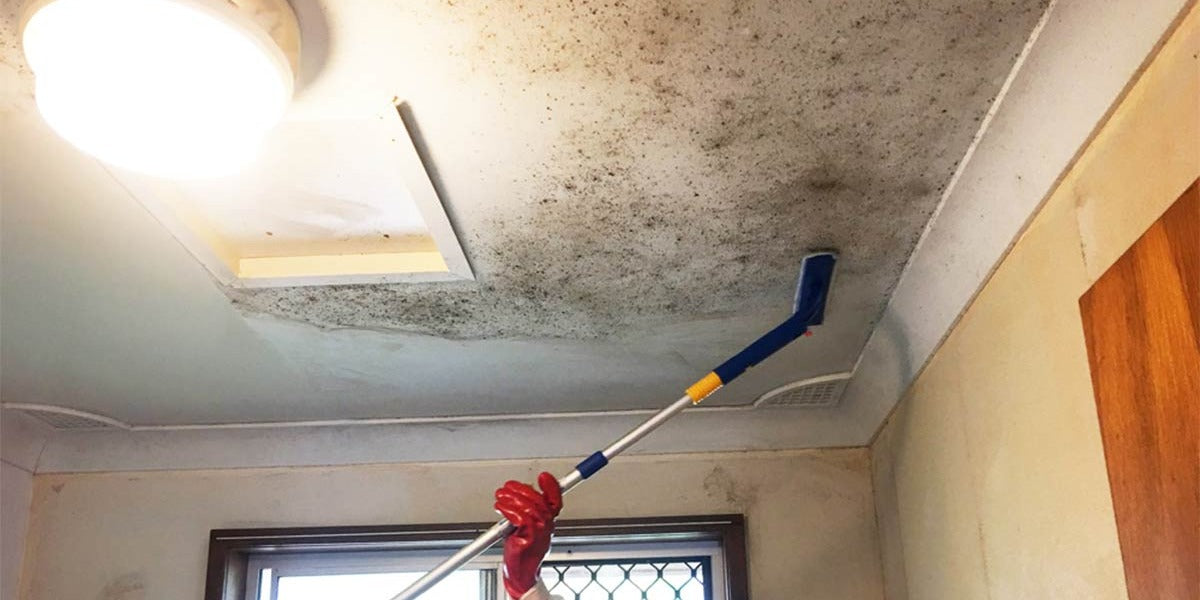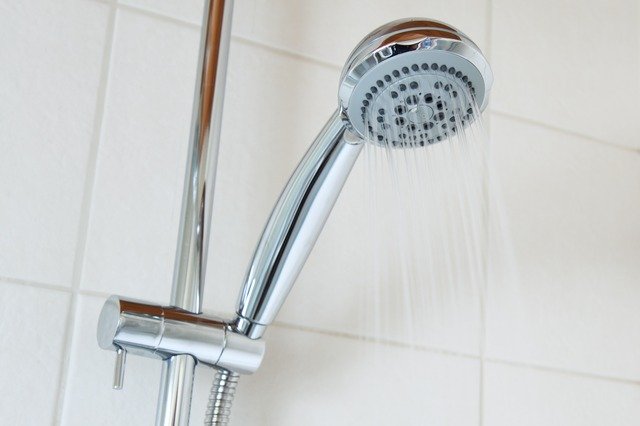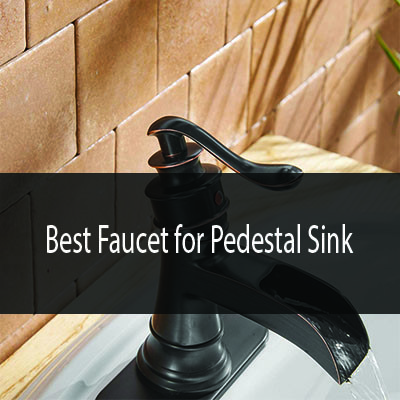Bathrooms are the perfect breeding ground for mold thanks to all that moisture and humidity. But here’s the good news: choosing the right paint can make all the difference. The right paint doesn’t just make your ceiling look fresh and clean—it actively helps prevent mold from taking hold.
In this guide, we’ll reveal the best paint options to keep your bathroom mold-free and looking its best. Stick with us, because by the end of this article, you’ll know exactly what to buy to protect your home and save yourself from endless scrubbing. Ready to transform your bathroom ceiling for good? Let’s dive in!

Credit: aloraircrawlspace.com
Table of Contents
Why Bathroom Ceilings Need Special Paint
Moisture buildup makes bathroom ceilings prone to mold and mildew. Specialized paint resists humidity and protects surfaces effectively. Choosing mold-resistant options ensures long-lasting durability and a healthier environment.
Bathrooms are unique spaces with constant exposure to moisture and humidity. These conditions create the perfect environment for mold and mildew growth. Standard paints often fail to withstand these challenges, leading to peeling and stains. Choosing the right paint helps protect the ceiling from damage while keeping it looking fresh. Bathroom ceilings face more moisture than other areas of your home. Steam from hot showers rises and collects on the ceiling. Over time, this can weaken standard paint and foster mold. Special paints are designed to resist these effects, ensuring durability.
What Makes Bathroom Paint Different?
Bathroom paint contains additives that fight mold and mildew. These additives prevent fungal growth, even in damp conditions. This makes the paint last longer and keeps surfaces cleaner. The formulation is also more resistant to peeling and bubbling. Regular paints often break down under constant exposure to moisture. Bathroom-specific paints handle this moisture better, maintaining their appearance.
The Importance Of Moisture Resistance
Moisture-resistant paints create a barrier that stops water from soaking in. This protects the ceiling material underneath from damage. Without this protection, moisture can lead to cracks and stains. Moisture resistance also reduces the frequency of repainting. It keeps the ceiling looking fresh, even in high-humidity environments.
Preventing Mold And Mildew Growth
Mold thrives in warm, damp spaces like bathrooms. A ceiling covered in the wrong paint can quickly show signs of mold. Special bathroom paints include ingredients that actively prevent mold and mildew from forming. Using the right paint improves air quality by reducing mold spores. This is especially important for people with allergies or respiratory issues.
Durability In High-humidity Conditions
Bathroom ceilings need paint that can handle extreme conditions. High humidity and temperature changes often cause standard paints to degrade. Bathroom-specific paints are designed to remain intact and maintain their color. Durable paints save time and money by reducing the need for frequent touch-ups. They are an investment in the long-term appearance of your bathroom. “`
Key Features To Look For In Bathroom Ceiling Paint
Choosing the right paint for bathroom ceilings is essential to prevent mold. Bathrooms are prone to moisture buildup, making ceilings vulnerable to mold and mildew growth. Selecting paint with specific features ensures a long-lasting and healthy space. Below are the key features to consider.
Moisture Resistance
Bathroom ceilings face constant exposure to steam and humidity. Paint with moisture-resistant properties reduces the risk of water damage. It helps prevent peeling, bubbling, or cracking caused by excess moisture. Look for paints designed specifically for high-humidity environments.
Mold And Mildew Protection
Bathrooms are ideal breeding grounds for mold and mildew. Choose paint with built-in antimicrobial agents. These agents inhibit mold and mildew growth, keeping ceilings clean and safe. Mold-resistant paint can improve air quality by reducing harmful spores.
Durability And Longevity
Bathroom paint should be tough enough to withstand frequent cleaning. Durable paint maintains its finish even after scrubbing and washing. High-quality paint also lasts longer, reducing the need for frequent repainting. Opt for paints labeled as washable or stain-resistant.
Ease Of Application
Painting bathroom ceilings can be challenging due to corners and uneven surfaces. Paint with a smooth consistency ensures easy application and reduces effort. Quick-drying formulas save time and prevent smudges. Choose paint compatible with brushes or rollers for convenience.
Top Paint Types For Bathroom Ceilings
Choosing the right paint for your bathroom ceiling is crucial if you want to keep mold and moisture at bay. The high humidity and frequent exposure to steam in bathrooms make it a breeding ground for mold, which can damage your ceiling and impact your health. To tackle these challenges, you need a paint type that not only looks great but also protects your bathroom ceiling effectively.
Acrylic Paints
Acrylic paints are a popular choice for bathroom ceilings because of their durability and water resistance. They form a protective layer that prevents moisture from seeping into the surface, reducing the chances of mold growth. Look for acrylic paints labeled as “mold-resistant” or “bathroom-specific” for even better performance.
You’ll also love how easy acrylic paint is to clean. A quick wipe with a damp cloth can remove any dirt or stains, which is perfect for high-moisture areas. Plus, they come in a variety of finishes, so you can achieve the look you want while staying functional.
Semi-gloss Finishes
Semi-gloss finishes are excellent for bathroom ceilings due to their slightly shiny surface that repels moisture. This finish is especially helpful in bathrooms with poor ventilation, as it prevents water droplets from soaking into the paint. Semi-gloss paints are also less likely to crack or peel over time, even in humid conditions.
Another advantage is how reflective they are. A semi-gloss ceiling can make your bathroom appear brighter and more open, especially if it’s a smaller space. Just make sure to prepare the surface well since imperfections can be more noticeable with this finish.
Satin Finishes
Satin finishes strike a balance between matte and glossy, making them a versatile option for bathroom ceilings. They offer good moisture resistance while still providing a softer, less reflective look compared to semi-gloss. If you prefer a more subtle finish that still fights mold, satin might be your best bet.
One thing to note is that satin finishes are easier to clean than flat paints. This is a great option if you want a low-maintenance ceiling that still offers protection against mold. Pair it with a mold-resistant primer for added durability.
Have you noticed mold creeping up your bathroom ceiling before? Switching to one of these paint types could save you the hassle of constant cleaning and repairs. Don’t forget to ventilate your bathroom properly to give your paint the best chance to perform.

Credit: benjaminmooremaui.com
Expert-recommended Paint Brands
Bathrooms are prone to high humidity, making mold a common issue. Choosing the right paint can help prevent mold growth on ceilings. Experts recommend specific paint brands designed for moisture resistance and durability. Below are some of the best paint options for bathroom ceilings to keep mold at bay.
Zinsser Perma-white
Zinsser Perma-White is a trusted choice for bathroom ceilings. It is mold and mildew resistant, making it ideal for humid spaces. This paint offers excellent coverage and a washable finish. It also has low odor, which is great for indoor use. Many professionals recommend it for its durability and easy application.
Benjamin Moore Aura Bath & Spa
Benjamin Moore Aura Bath & Spa is a premium option for moisture-prone areas. Its matte finish gives ceilings a smooth, elegant look. This paint is specially formulated to resist mold and mildew. It also performs well in high-humidity environments. Its rich color retention ensures a long-lasting and vibrant appearance.
Behr Premium Plus Ultra
BEHR Premium Plus Ultra is a budget-friendly yet effective choice. It features a mildew-resistant finish, perfect for bathroom ceilings. This paint is stain-resistant and easy to clean, ensuring a polished look over time. It provides excellent coverage and is available in various finishes. Its low-VOC formula makes it a safer option for indoor use.
Preparation Tips For Painting Bathroom Ceilings
Painting a bathroom ceiling isn’t just about picking the right paint; how you prepare the surface can make or break the results. Bathrooms are prone to humidity, which means you need to take extra steps to ensure the paint sticks well and prevents mold from returning. Let’s dive into key preparation tips that will save you time and frustration.
Cleaning And Removing Existing Mold
Before you start painting, inspect your ceiling for mold. Even if you don’t see visible spots, mold could be lurking, especially in high-moisture areas. Use a mixture of water and white vinegar or a mold remover to scrub the surface thoroughly.
Wear gloves and a mask to protect yourself from mold spores. Focus on corners and edges, as these areas tend to trap moisture. Once clean, let the ceiling dry completely—paint applied to damp surfaces will peel or trap mold underneath.
Using A Primer For Better Adhesion
A primer isn’t just an optional step—it’s crucial for bathrooms. Look for a mold-resistant primer designed for high-humidity areas. These primers create a protective layer that helps your paint adhere better and lasts longer.
Apply the primer evenly across the ceiling using a roller. Don’t rush; uneven primer can lead to patchy paint later. If you’re unsure which primer to choose, ask at your local hardware store—they usually have recommendations for bathroom-specific products.
Protecting Fixtures And Walls
Before painting, cover light fixtures, walls, and any nearby surfaces to avoid accidental splatters. Use painter’s tape along the edges of the ceiling for clean lines. Drop cloths or old sheets work well for covering the floor and other areas.
Take your time with this step. It’s frustrating to clean dried paint off fixtures, so prevention is key. If you’re painting near a fan or vent, consider removing it temporarily for easier access.
Proper preparation doesn’t just make your painting project easier—it ensures the paint job lasts and keeps mold at bay. What’s your go-to trick for prepping a tricky area like a bathroom ceiling? Let us know in the comments!

Credit: www.prestigepaintinggta.ca
Maintenance Tips To Keep Mold Away
Bathrooms are notorious for being breeding grounds for mold, especially on ceilings where moisture collects. Even the best mold-resistant paint can only do so much if you neglect proper maintenance. Let’s dive into some practical tips to keep mold from creeping back into your bathroom after you’ve painted your ceiling.
Improving Bathroom Ventilation
Good airflow is your first line of defense against mold. Install an exhaust fan if you don’t already have one, and make sure to run it during and after showers for at least 20 minutes. Don’t forget to clean the fan regularly—dust buildup reduces its efficiency.
If an exhaust fan isn’t an option, crack open a window while showering. Even just leaving the door slightly ajar can help moisture escape. You might also want to consider a dehumidifier if your bathroom tends to stay damp.
Regular Cleaning Practices
A clean bathroom is a mold-free bathroom. Wipe down damp surfaces like tiles, mirrors, and ceilings with a microfiber cloth after each use. This simple habit can stop mold before it starts.
Once a week, clean your bathroom with a mold-preventing solution. A mix of water and white vinegar works wonders and is eco-friendly. Don’t neglect your shower curtain—replace or wash it every month to keep mold spores at bay.
Inspecting For Early Signs Of Mold
Don’t wait until you see black spots on your ceiling to take action. Check corners, edges, and around light fixtures regularly for discoloration or a musty smell. Early detection can save you from extensive cleaning later.
If you notice peeling paint or tiny dark dots, act immediately. Scrub the area with a mold-killing cleaner and reapply your mold-resistant paint if necessary. Staying vigilant is the easiest way to ensure your bathroom remains mold-free.
By keeping up with these maintenance habits, you can make your bathroom ceiling a mold-free zone for years to come. What’s your go-to method for keeping mold at bay? Share your tips in the comments!
Frequently Asked Questions
What Is The Best Paint For Bathroom Ceiling To Prevent Mold?
Use mold-resistant, satin or semi-gloss paint designed for high-humidity areas. These options prevent moisture buildup and inhibit mold growth.
What To Put On A Bathroom Ceiling To Prevent Mold?
Use mold-resistant paint or primer on the bathroom ceiling. Install proper ventilation like exhaust fans to reduce moisture.
What Is The Best Paint To Prevent Mould In Bathrooms?
The best paint for preventing mould in bathrooms is moisture-resistant, anti-mould paint with a satin or semi-gloss finish.
Can You Paint Over Mold On A Bathroom Ceiling?
Painting over mold is not recommended. Remove mold completely using proper cleaning methods before painting to prevent regrowth.
Conclusion
Choosing the right paint can protect your bathroom ceiling from mold. Mold-resistant paints are durable, easy to apply, and prevent moisture buildup. Focus on quality options designed specifically for humid spaces. These paints ensure long-lasting protection and a clean, fresh look.
Always prepare the surface well before painting for the best results. Proper ventilation also helps keep mold at bay. By selecting the right paint and following these tips, you can maintain a healthy, mold-free bathroom. A small effort now saves trouble later.
Keep your ceiling protected and your bathroom looking its best.







